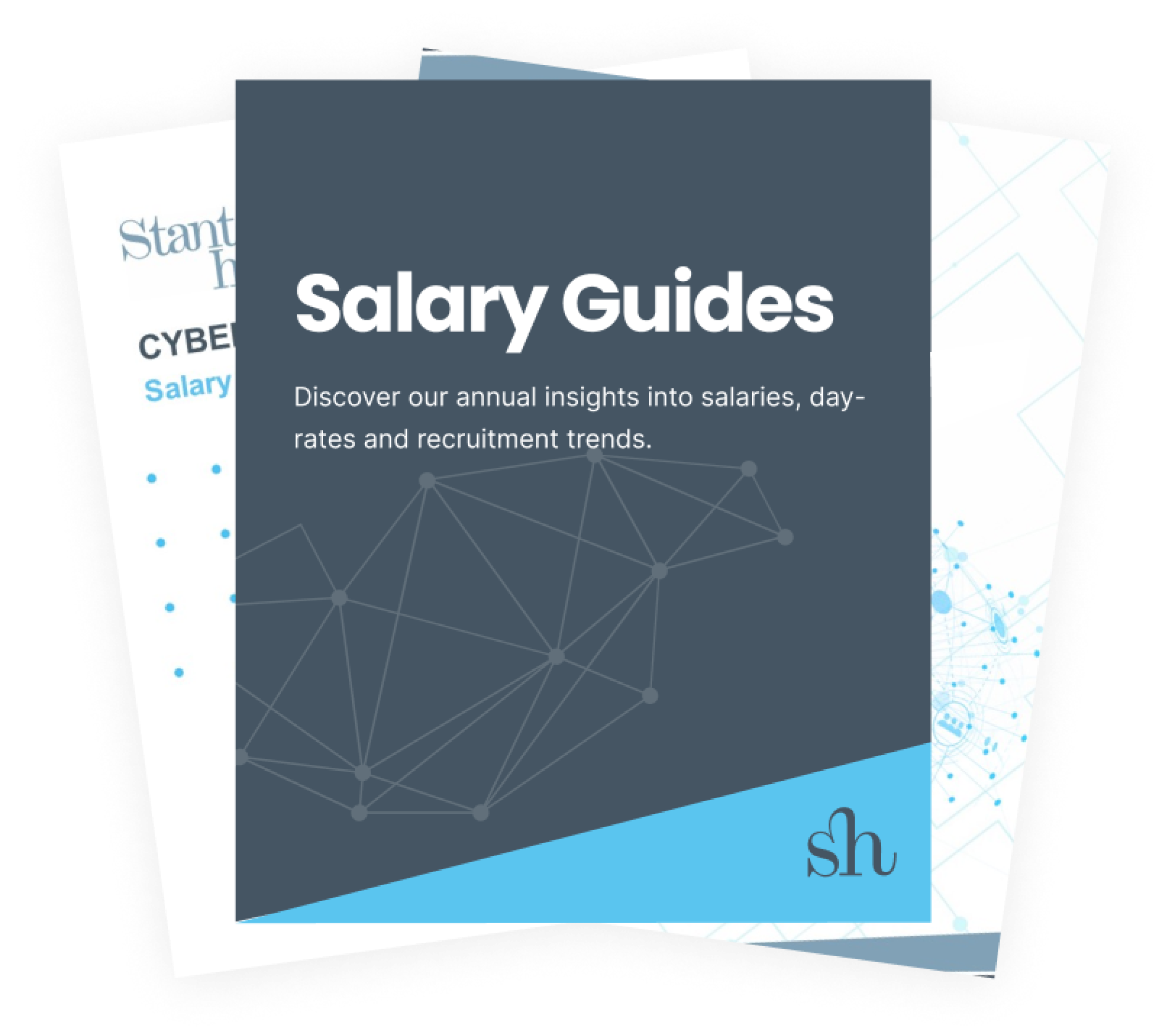
Age is Just a Number: Why Hiring Older Workers is a Smart Move
As a Candidate Research Manager at Stanton House, I have witnessed first hand the challenges and opportunities that come along with an aging workforce. Sadly, although age discrimination is illegal under the Equality Act, I have encountered instances where mature candidates, particularly those in their third quarter of life (ages 50-75), are often overlooked.
On occasion, hiring managers (consciously or unconsciously) use discriminative language to describe their 'ideal candidate'. Rather than focusing on the skills and qualities required to undertake the role, I sometimes hear phrases such as, “I want someone young and dynamic”, “up and coming”, or they even request to see candidates with a specific number of years of experience.
A recent LinkedIn post I read, eloquently echoed what I frequently hear from some of the candidates I speak with, and highlights the struggles and strengths of mature workers:
"I am at the prime of my career and never had myself so together. I've developed resilience, finally know what I need from work to flourish, understand who brings out the best in me regarding leadership, know how I learn, and am committed to continually developing my professional skills. My lifestyle and commitments mean you'll likely retain me if you treat me well, and I've got a hell of a lot more emotional intelligence and life stability than I had at 30. Would you employ me? According to the data, you probably wouldn't."
It is clear that age discrimination, despite being illegal in the UK since 2006 and protected under the Equality Act of 2010, remains a persistent issue. I believe it is time for hiring managers to address this head-on by adopting inclusive practices that recognise the value of older workers. Especially as employers cannot afford to miss out on exceptional talent in a skills-short market!
The Aging Population: A Global Perspective
Globally, the median age of the population is rising. In the UK, workers aged 50+ now represent 32.6% of the workforce, up from 21% in the early 1990s. In the US, the Bureau of Labor Statistics says that 25% of the workforce is now 55 and older. These trends reflect a broader shift: as life expectancy increases, so does the need for sustained employment among older individuals.
Baby Boomers (those born between 1946 and 1964) represent a largely untapped talent pool. Many left the workforce early for a better work-life balance, but with the rise of hybrid working options and the increased cost of living, many are being tempted back to the workplace.
This means employers need to find ways to attract and retain older employees, which might involve redefining traditional career trajectories, offering more part-time positions, and maintaining the flexibility lessons learned from the pandemic.
The Reality of Age Discrimination
Age discrimination is not just a moral failing; it's a significant barrier to leveraging a talented and experienced segment of the workforce. According to a study by the Centre for Ageing Better, 36% of people aged 50-60 feel disadvantaged when applying for jobs due to their age. For women, the statistics are even more stark:
- Women over 40 are 47% less likely to be called back for a job interview than men of the same age.
- They are 36% less likely to be called back than younger women.
- Two-thirds of women over 40 have experienced or witnessed age discrimination in the workplace.
- 53% of women over 50 have been asked about their age during a job interview.
- 79% of women over 45 feel they are being overlooked for jobs due to age.
A survey of UK recruiters found that 36% had rejected a job applicant based on age. This discrimination not only impacts individuals' careers but also deprives businesses of the wealth of experience and stability that older workers bring.
Our team had a recent example where an older gentleman, who almost didn’t make it past the CV screening stage due to his age, was placed in a senior finance role despite initial reservations from the hiring manager. After the interview, he was the client’s favoured candidate, and I am pleased to say he is now excelling in his new role and bringing a huge amount of value to that organisation.
Life’s Four Quarters: A New Framework for Understanding Aging

At a recent LinkedIn event I attended, I was inspired by Avivah Wittenberg-Cox's discussion on the concept of Life’s Four Quarters:
Q1 Grow (0-24 years): A period of learning and exploration, often extending into "emerging adulthood" where individuals explore various activities and roles.
Q2 Achieve (25-49 years): Traditionally viewed as the prime working years, where individuals build careers and families. Wittenberg-Cox suggests that recognizing the length of modern careers can alleviate the pressure to achieve everything in this quarter.
Q3 Become (50-74 years): A new phase of mature, active adulthood. With fewer caregiving responsibilities, individuals can focus on career advancements, personal growth, and new ventures.
Q4 Harvest (75-100 years): A time to reap the benefits of earlier life stages, focusing on legacy, generativity, and continued growth.
She explained that individuals in their third quarter of life (ages 50-75) often have fewer caregiving responsibilities and more time to focus on their careers. So, this period can be their most productive and fulfilling professional phase.
The Business Case for Age Diversity
What’s more, there is plenty of evidence that supports the benefits of age diversity in the workplace. A study by the Boston Consulting Group found that diverse teams, including those with age diversity, are more innovative and better at problem-solving. Companies that support multi-generational workforces report higher productivity and lower turnover rates. Despites these facts agism is a topic often ignored in debates around diversity and inclusion.
Further, Lyndsey Simpson, an expert in workforce data, emphasises that businesses leveraging the experience of older employees often see improved mentorship and knowledge transfer, critical for long-term success.
Why Hiring Older Workers is a Smart Move
1. Experience & Expertise: Older workers bring a wealth of experience and knowledge to the table. Their extensive career histories mean they have faced a variety of challenges and can offer seasoned perspectives on problem-solving and strategic planning.
2. Stability & Reliability: According to research by the National Council on Aging, older workers have lower turnover rates and higher job satisfaction compared to younger employees. This stability can save companies the costs associated with high turnover and frequent retraining.
3. Mentorship & Knowledge Transfer: Older employees are well-positioned to mentor younger staff, fostering an environment of learning and development. This transfer of knowledge is invaluable for maintaining institutional memory and ensuring continuity.
4. Enhanced Soft Skills: Years of professional and personal experiences often translate into stronger interpersonal and communication skills. Older workers typically excel in areas requiring diplomacy, negotiation, and customer service.
5. Work Ethic & Professionalism: Studies have shown that older employees often demonstrate a strong work ethic, dedication, and professionalism. These traits contribute positively to workplace culture and productivity.
Recommendations for Employers
So, what can employers do to help create an age-diverse workforce?
- Put Age into Equality, Diversity & Inclusion (ED&I): Include age as a critical component in your ED&I strategy. Ensure that age-related policies are as robust as those for other protected characteristics like sex, ethnicity, or disability.
- Strategic Workforce Planning: Understand the diversity and skills profile of your workforce to ensure it meets future organisational needs. Use this data to inform recruitment, people management, and development practices.
- Health & Wellbeing Support: Provide access to occupational health services. Poor health is a major reason for economic inactivity among those in their 50s.
- Phased Retirement Options: Offer phased retirement options and flexible working arrangements to support older employees with ill-health or caregiving responsibilities. This can encourage them to stay in the workforce longer.
- Regularly Review Age Data: Collect and scrutinise age data from the recruitment process to identify and eliminate biases. This includes the age of applicants, those shortlisted, interviewees, and successful candidates.
- Promote a Culture of Inclusion: Cultivate a workplace culture that values diversity and inclusion. Encourage open dialogue about age diversity and educate employees about the benefits it brings.
- Continuous Training & Development: Invest in the continuous development of all employees, regardless of age. This not only helps in upskilling the workforce but also demonstrates a commitment to employee growth and retention.
Advice to Hiring Managers
To combat age discrimination, hiring managers need to adopt a 'skills first' approach, prioritising the skills and competencies required for the job over age-related biases. Here are some practical steps to achieve this:
- Revise Job Descriptions: Avoid age-biased language in job postings. Terms like ‘digital native’ or ‘recent graduate’ can deter older candidates. Focus on the skills and experiences necessary for the role instead. Highlight benefits that appeal to older workers, such as flexible working arrangements and generous pensions.
- Blind Recruitment: Implement blind recruitment practices where age and other identifying details are removed from CVs during the initial screening process. This helps ensure candidates are evaluated based on their skills and qualifications alone.
- Inclusive Interviewing: Focus on competencies and how candidates' experiences align with the job requirements. Avoid assumptions based on age.
- Flexible Working Arrangements: Offer flexible working options that can attract older candidates who may value work-life balance. This includes part-time roles, remote working, and flexible hours.
- Mentorship Programmes: Establish mentorship programs that pair younger employees with older, more experienced colleagues. This fosters knowledge sharing and helps bridge generational gaps.
Conclusion
Creating an age-inclusive workforce is not just about compliance with legal requirements; it is a strategic advantage. Older workers offer invaluable experience and stability, which can significantly enhance business performance. By implementing the practices outlined above, employers can build a more inclusive, productive, and harmonious workplace that leverages the strengths of all employees, regardless of age.
Addressing age discrimination also requires a concerted effort from all levels of an organisation. By adopting a 'skills first' approach and implementing inclusive recruitment practices, hiring managers can not only combat ageism but also harness the full potential of a diverse workforce. As Avivah Wittenberg-Cox wisely noted, "It's time to see age as an asset and not a barrier."
Sources:
CIPD: Understanding Older Workers
Life’s 4 Quarters by Avivah Wittenberg-Cox
Centre for Ageing Better: Tackling ageism in Recruitment
Centre for Ageing Better: Good Recruitment for Older Workers
Centre for Ageing Better: Closing the Employment Gap
Harvard Business Review: Bridging Generational Divides



















